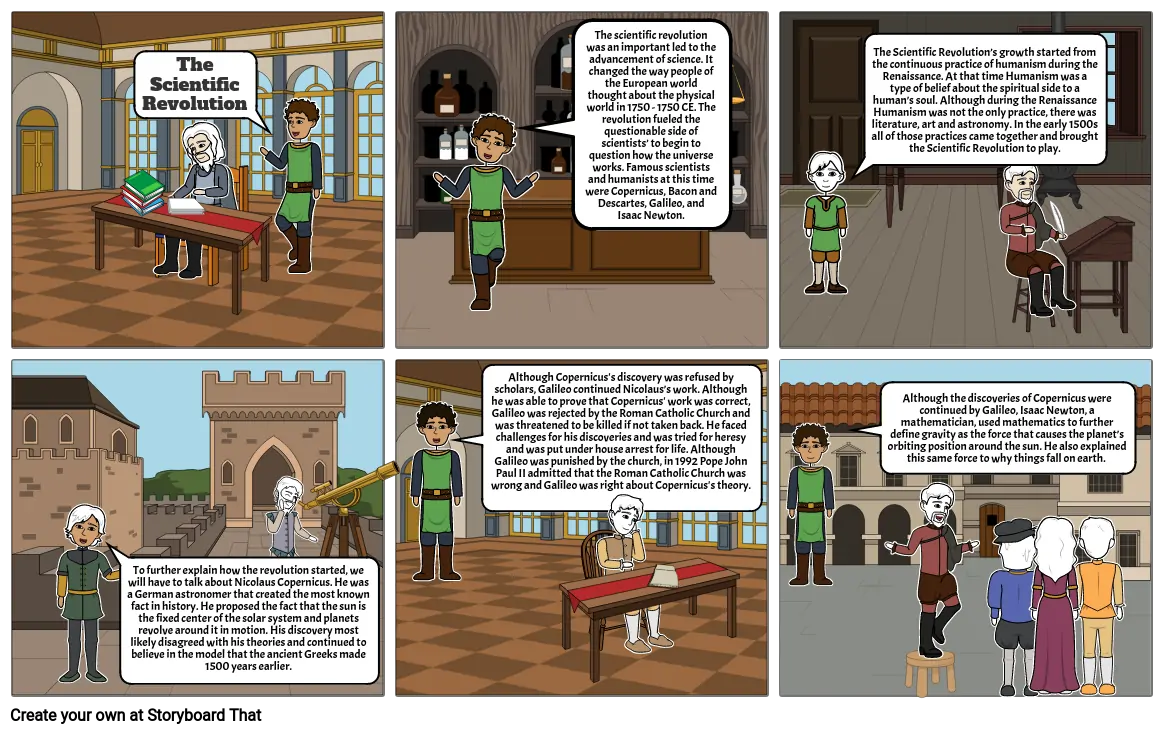Global Project

Texto del Guión Gráfico
- The Scientific Revolution
- The scientific revolution was an important led to the advancement of science. It changed the way people of the European world thought about the physical world in 1750 - 1750 CE. The revolution fueled the questionable side of scientists’ to begin to question how the universe works. Famous scientists and humanists at this time were Copernicus, Bacon and Descartes, Galileo, and Isaac Newton.
- The Scientific Revolution’s growth started from the continuous practice of humanism during the Renaissance. At that time Humanism was a type of belief about the spiritual side to a human’s soul. Although during the Renaissance Humanism was not the only practice, there was literature, art and astronomy. In the early 1500s all of those practices came together and brought the Scientific Revolution to play.
- To further explain how the revolution started, we will have to talk about Nicolaus Copernicus. He was a German astronomer that created the most known fact in history. He proposed the fact that the sun is the fixed center of the solar system and planets revolve around it in motion. His discovery most likely disagreed with his theories and continued to believe in the model that the ancient Greeks made 1500 years earlier.
- Although Copernicus's discovery was refused by scholars, Galileo continued Nicolaus’s work. Although he was able to prove that Copernicus' work was correct, Galileo was rejected by the Roman Catholic Church and was threatened to be killed if not taken back. He faced challenges for his discoveries and was tried for heresy and was put under house arrest for life. Although Galileo was punished by the church, in 1992 Pope John Paul II admitted that the Roman Catholic Church was wrong and Galileo was right about Copernicus's theory.
- Although the discoveries of Copernicus were continued by Galileo, Isaac Newton, a mathematician, used mathematics to further define gravity as the force that causes the planet’s orbiting position around the sun. He also explained this same force to why things fall on earth.
Más de 30 millones de guiones gráficos creados

